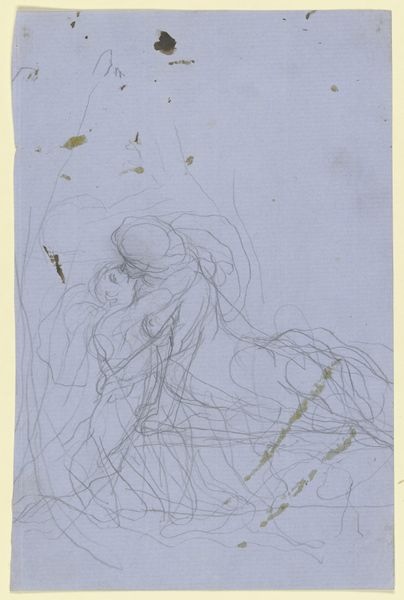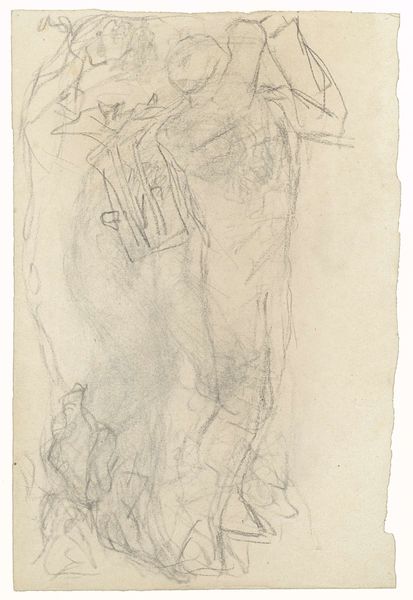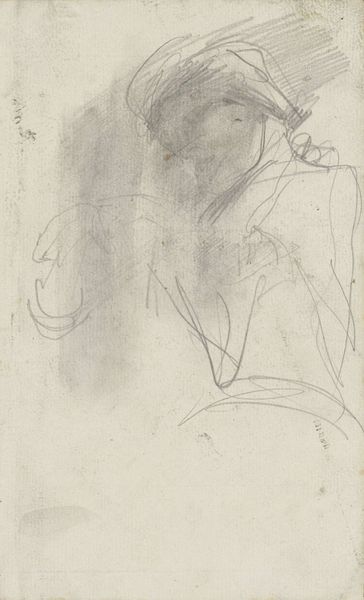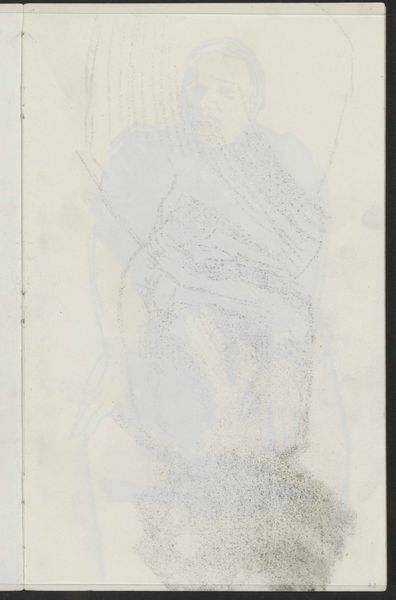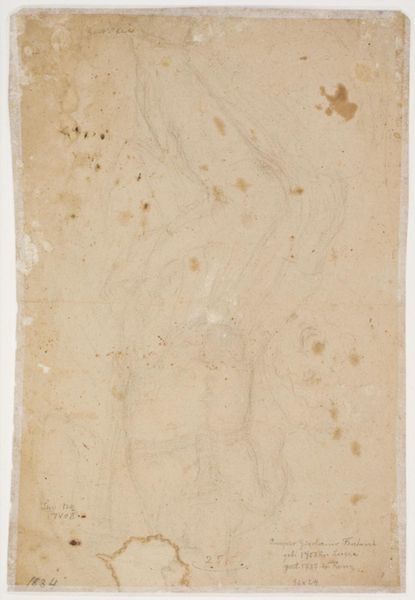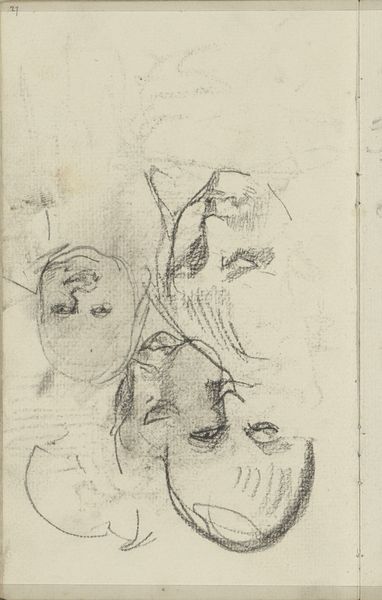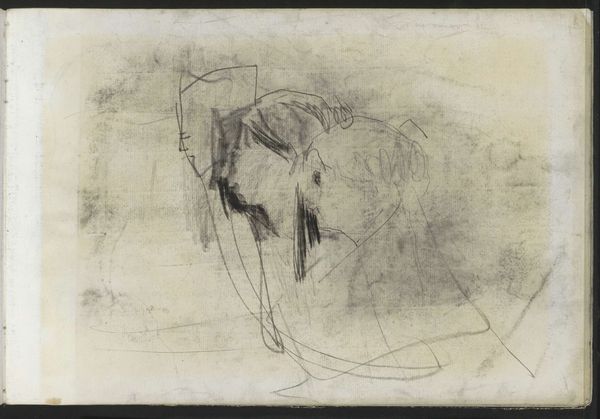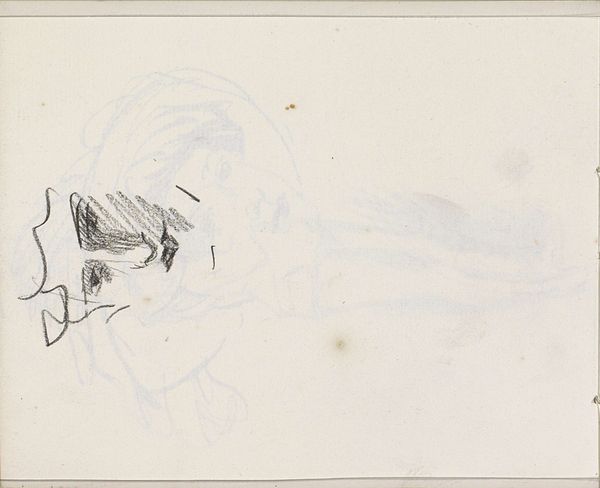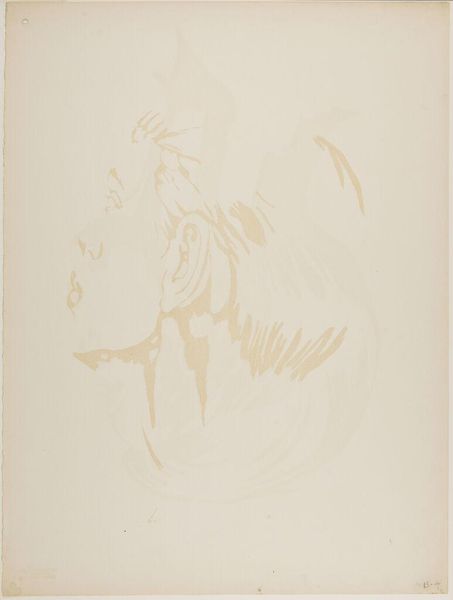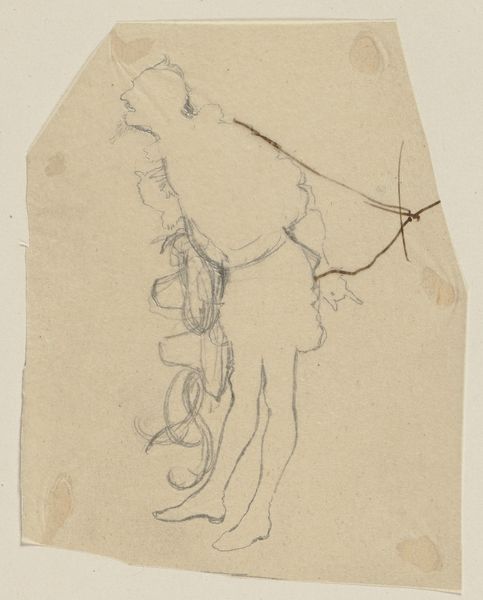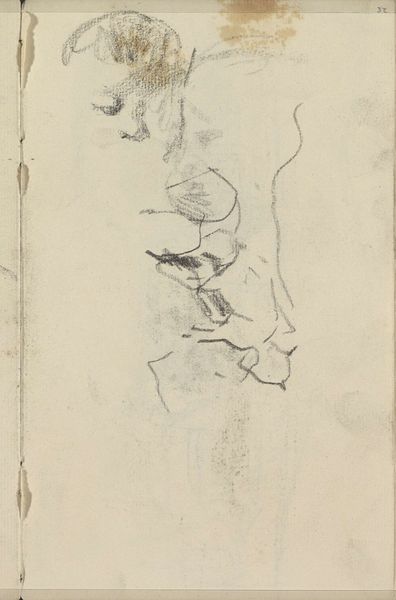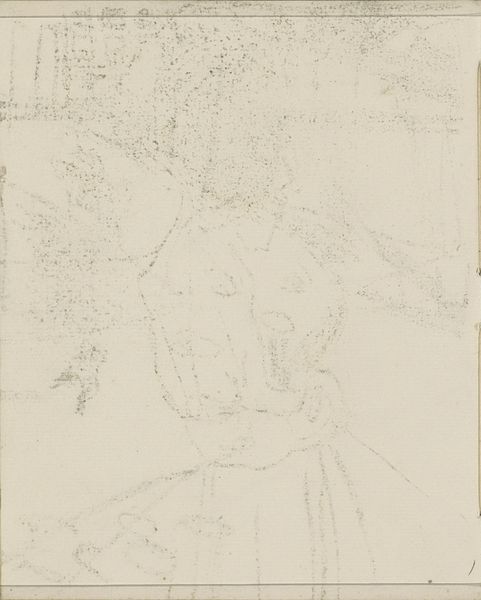
Dimensions: 153 mm (height) x 101 mm (width) (bladmaal)
Curator: Here we have “Blyantsrids,” a pencil drawing made by Nicolai Abildgaard sometime between 1743 and 1809. It resides here at the SMK, the Statens Museum for Kunst. Editor: It's haunting, isn’t it? The wispy lines barely tether themselves to the paper. It feels ephemeral, like a fading memory. The stains only amplify that sense of fragility and transience. Curator: Abildgaard was a leading figure of Romanticism in Denmark, deeply influenced by classical antiquity and Neoclassical ideals. His works often explored dramatic themes of history and mythology. We see hints of that, perhaps, even in this preliminary sketch. Editor: Note the energetic use of line – nervous, searching. It's pure potentiality. You can sense the artist wrestling with form. And the figure emerges, seated. The overall texture conveys the immediacy of the creative impulse, unfiltered. It feels less about the final form and more about the creative process. Curator: Abildgaard's influence is immense, and extends through painting and sculpture but I believe it shines most clearly here in the intimacy of the human hand sketching with charcoal or pencil as it renders emotion into reality. I detect here the hint of historical consciousness: this may depict characters from ancient Greece. Editor: I agree it evokes ancient dramas; there is an echo of classical drapery. Yet, there's an ambiguity that lends itself to universal themes: longing, sorrow, perhaps even madness, as revealed in its frenzied quality. Curator: Considering it's on paper, a very vulnerable surface and drawing, which is, so to say, the DNA of a painter... yes, it makes you appreciate how physical it is. It makes us contemplate time and cultural meaning. Editor: Absolutely, you get a privileged glimpse into Abildgaard's process, how thought becomes line and ultimately transforms into image. It reminds us art can start anywhere. A gesture and a fragment. Curator: What you are saying, really, is that you understand why it matters... This image helps us connect with history more emotionally and immediately than any history book might. Editor: It strips the pretense away. Art is never really finished and history is not carved into granite. Even what has endured is also in some state of flux.
Comments
No comments
Be the first to comment and join the conversation on the ultimate creative platform.
